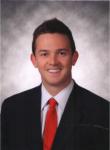McConnell, Scott

Scott is a student in the Biochemistry, Molecular and Structural Biology Graduate Program, where he works in the laboratory of Dr. Robert Clubb. He joined the CMB training program in 2016. He received a B.S. degree in 2015 from the University of California, Los Angeles.
Mentor: Dr. Robert Clubb
My research aims to elucidate how Gram-positive bacteria assemble and display pili structures on their cell surface. The importance of obtaining a detailed molecular-level understanding of pili construction cannot be overstated due to their central role in bacterial adherence to host tissues and modulation of host immunity, invasion, aggregation, biofilm formation, and virulence. These studies will have a broad impact, as Gram-positive pili facilitate infections caused by pathogenic C. diphtheriae, as well as other clinically relevant bacteria, such as Actinomyces oris, Bacillus cereus, Enterococcus faecium, Streptococci, and Bifidobacterium bifidum. This research could guide the design of small molecules to prevent pili assembly, which could serve as the next generation of antibiotics to treat multi-drug resistant bacterial infections.
To establish general insights of pilus assembly, I will utilize biochemical, structural and cellular approaches to reveal how Corynebacterium diphtheriae assembles SpaA pili. We have reconstituted the reaction in vitro and I will use a multi-faceted approach involving NMR, x-ray crystallography and FRET-based assays to interrogate the structure and kinetic parameters of the sortase pilin polyermase – as well as its protein substrates – in order to define the molecular basis of pilus assembly in C. diphtheriae. Using this combination of techniques, I will study how sortase and the C-terminal domain of one pili monomer assemble spatially to form the stable acyl intermediate, and how a highly conserved sorting signal on the sortase substrate is transferred throughout the catalytic cycle. We hypothesize that an N-terminal helix of this sortase provides the necessary contacts for simultaneous recognition and positioning of both substrates, a unique feature of class-C sortase. I will also determine the precise orientation of the N-terminal domain of the subsequent pili monomer to be added to the elongating pilin strand with respect to sortase and the preceding monomer in the mechanistically crucial “attack complex.” After we develop a model of the assembly pathway through these studies, we will test our structurally-derived understanding with in vivo functional assays using the C. diphtheriae system.


